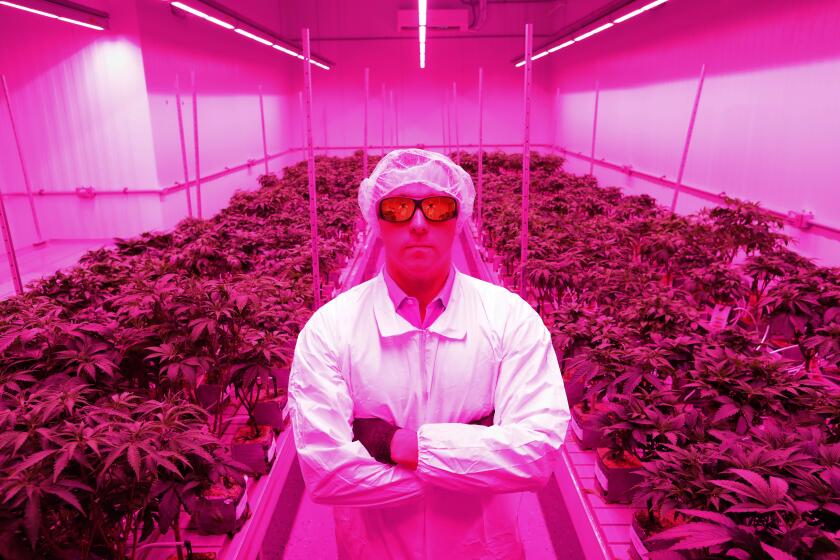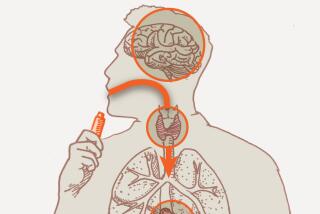Careful, cannabis users: Bongs may create more secondhand smoke than cigarettes

- Share via
In a study sure to kill the buzz at many a party, researchers at UC Berkeley say bongs may create more secondhand smoke than tobacco cigarettes.
The study, published Wednesday on the JAMA Network, found that smoking cannabis in a bong created concentrations of fine particulate matter four times greater than concentrations observed after smoking a tobacco cigarette or hookah pipe.
“The adverse health effects of particulate matter in secondhand tobacco smoke are well established, and they provide a context in which we should see these findings,” said S. Katharine Hammond, a professor of environmental health sciences at UC Berkeley and study co-author with graduate researcher Patton Khuu Nguyen.
Hammond said the study could help defeat misconceptions that secondhand cannabis smoke poses less risk than secondhand tobacco smoke.
“There is a common misperception among young adults at least that secondhand cannabis smoke is safe, and this study shows that that’s not true,” Hammond said.
After California voters legalized cannabis in 2016, there was a push to clear past marijuana-related convictions. Things haven’t gone according to plan.
According to the study, 27% of young adults believe secondhand exposure to cannabis smoke is safe, but “cannabis smoke has several hundred toxic chemicals, carcinogens, and fine particulate matter, many at higher concentrations than tobacco smoke.”
Previous research has linked secondhand tobacco smoke to cancer, respiratory diseases and premature births, the study said.
“These concerns have not translated to cannabis bong smoking … wherein smoke is drawn through water,” the study said.
Additionally, concentrations of the particulate matter remained high well after smoking had ended.
The concern, Hammond said, is less for people choosing to smoke and more for others who may ingest the smoke involuntarily.
California legalized medical weed 25 years ago, spurring a nationwide shift. But federal government rules stymie research on marijuana’s potential.
To perform the study, researchers measured concentrations of particulate matter in a home before, during and after bong-smoking sessions of between 90 and 180 minutes with the doors and windows closed.
Hammond said a next step could include attempting to link secondhand cannabis smoke to the diseases and other maladies linked to secondhand tobacco smoke, although Hammond acknowledged that such studies are “difficult to do and take a long time.”
“Establishing people’s secondhand smoke exposure history is complicated,” Hammond said. “I don’t think we need to wait for that.”
Hammond said ample information exists about the composition of secondhand cannabis smoke, which contains “many of the same carcinogens and other toxic chemicals that are in secondhand tobacco smoke.”
More to Read
Sign up for Essential California
The most important California stories and recommendations in your inbox every morning.
You may occasionally receive promotional content from the Los Angeles Times.













